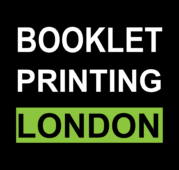A booklet format is a layout style for small, bound publications that typically contain informational, promotional, or educational content. Unlike a full-sized book, booklets are usually compact, with fewer pages, and are often used for specific purposes such as product catalogs, event programs, manuals, guides, and promotional materials. This format allows for easy distribution and accessibility, making it ideal for businesses and organizations to communicate key messages effectively.
Structure of a Booklet
Booklets usually have a cover page, which includes the title, logo, and any branding information. Inside, the pages are arranged in multiples of four, as they are printed on larger sheets that are folded and stapled in the center, creating four pages per sheet (two on each side). Common page counts are 8, 12, 16, 24, or 32 pages, depending on the amount of information and the booklet’s purpose.
The layout of a booklet is crucial for readability and flow. Pages are typically numbered, and content is organized in sections or chapters to make it easy to navigate. Design elements, such as headings, subheadings, and imagery, help break down information and enhance visual appeal. Graphics, charts, and photos are often used to complement the text, making the content engaging and memorable for readers.
Common Booklet Sizes
The standard sizes for booklets are often A4, A5, and 5.5” x 8.5” (half letter). A4 booklets (210 x 297 mm) are popular for corporate use, as they provide ample space for detailed content and images. A5 (148 x 210 mm) and half letter sizes are more compact, often used for quick-reference guides, catalogs, or manuals. Pocket-sized booklets, which are even smaller, are often employed for portable instructions or on-the-go reading.
Types of Binding for Booklets
Booklets are typically bound using saddle stitching or perfect binding. Saddle stitching is the most common and economical option, in which the sheets are folded in half and stapled along the spine, creating a sturdy and professional appearance. This method works best for booklets with up to 64 pages. For larger booklets, perfect binding may be used. Here, the pages are glued to a spine, giving the booklet a flat edge, similar to a paperback book. Perfect binding is more durable and provides a polished look for booklets that require more longevity, such as manuals or detailed catalogs.
Uses and Applications of Booklets
Booklets are versatile and widely used across industries. Businesses often use them for product catalogs, where each page showcases different products or services. They are also common in events, such as trade shows or conventions, where they serve as programs or schedules. Educational institutions and organizations frequently use booklets to provide guides, manuals, or study materials, offering an organized way to present complex information.
In marketing, booklets serve as powerful promotional tools. Real estate agencies, for example, may create booklets highlighting property listings with detailed descriptions, photos, and floor plans. Non-profits often use booklets for fundraising, showcasing their mission, achievements, and upcoming projects to appeal to potential donors.
Designing an Effective Booklet
Creating an effective booklet involves careful planning and design. Clarity and conciseness are key—content should be brief yet informative, with a focus on engaging the reader. Visual appeal is also essential, so selecting the right fonts, colors, and images is important. The design should align with the brand’s identity to reinforce recognition and trust.
Many printing companies offer templates and design services for booklets, simplifying the process for businesses or individuals. Digital booklet formats are also on the rise, allowing readers to access information on tablets or computers, offering an eco-friendly option that can reach a broader audience.
Conclusion
Booklet formats are a powerful tool for delivering information in a concise, structured, and visually appealing way. They are adaptable to various purposes, making them useful across different sectors and for diverse audiences. Whether in physical or digital form, a well-designed booklet effectively communicates information, enhances brand presence, and engages readers, making it a valuable asset for any organization or business.
